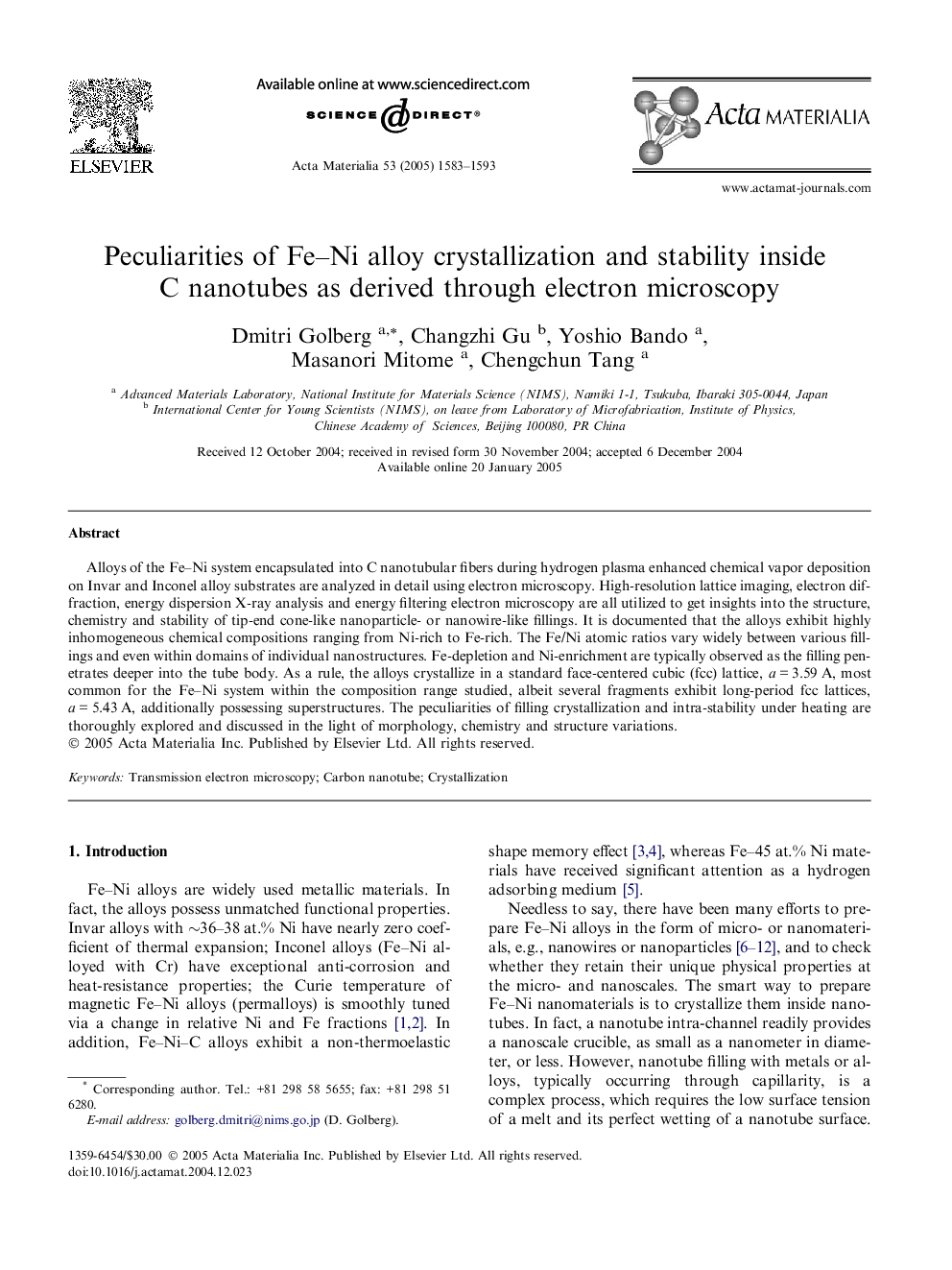| Article ID | Journal | Published Year | Pages | File Type |
|---|---|---|---|---|
| 10621076 | Acta Materialia | 2005 | 11 Pages |
Abstract
Alloys of the Fe-Ni system encapsulated into C nanotubular fibers during hydrogen plasma enhanced chemical vapor deposition on Invar and Inconel alloy substrates are analyzed in detail using electron microscopy. High-resolution lattice imaging, electron diffraction, energy dispersion X-ray analysis and energy filtering electron microscopy are all utilized to get insights into the structure, chemistry and stability of tip-end cone-like nanoparticle- or nanowire-like fillings. It is documented that the alloys exhibit highly inhomogeneous chemical compositions ranging from Ni-rich to Fe-rich. The Fe/Ni atomic ratios vary widely between various fillings and even within domains of individual nanostructures. Fe-depletion and Ni-enrichment are typically observed as the filling penetrates deeper into the tube body. As a rule, the alloys crystallize in a standard face-centered cubic (fcc) lattice, a = 3.59 A, most common for the Fe-Ni system within the composition range studied, albeit several fragments exhibit long-period fcc lattices, a = 5.43 A, additionally possessing superstructures. The peculiarities of filling crystallization and intra-stability under heating are thoroughly explored and discussed in the light of morphology, chemistry and structure variations.
Related Topics
Physical Sciences and Engineering
Materials Science
Ceramics and Composites
Authors
Dmitri Golberg, Changzhi Gu, Yoshio Bando, Masanori Mitome, Chengchun Tang,
